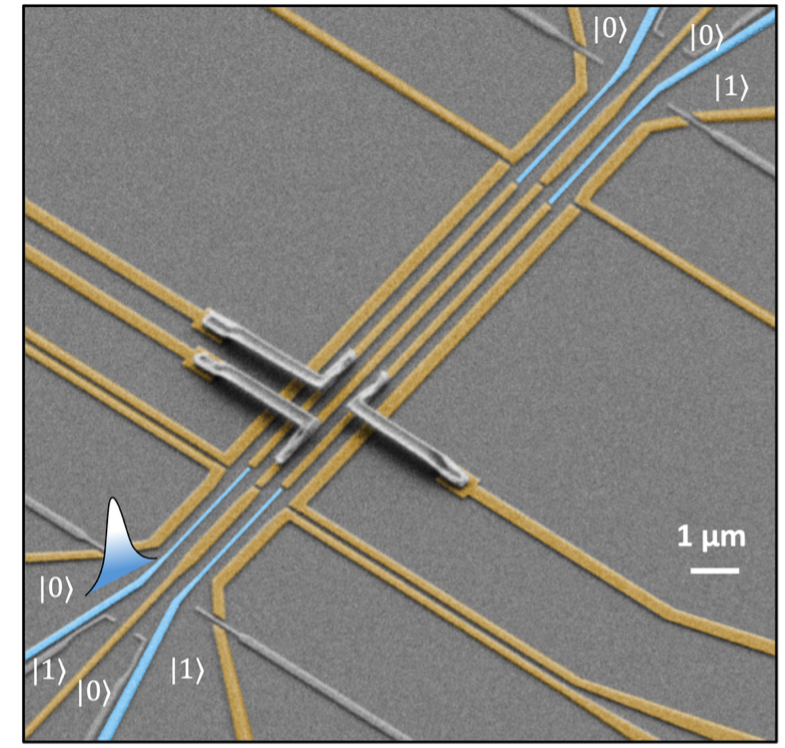
eQubitFly
Flying Electron Qubits
Project managers
Christopher Bäuerle, CNRS
Elodie Sollier, Benkei
Overview
The eQubitFly project aims to develop a novel quantum architecture by harnessing flying electron qubits. This approach constitutes a genuine technological breakthrough compared to mainstream architectures based on localized qubits.
Keywords: Electronic Qubits, Quantum Coherence, Transport measurements, Single-Electron Sources, Single-Electron Detectors, Theory, Experiment
Website : https://equbitfly.fr/
Social media: LinkedIn
In a nutshell
Recent advances in the generation and manipulation of ultrafast electronic excitations have shown that real-time coherent control of such excitations is now possible. This project focuses on developing the last two technological components needed to realize the first complete flying electron qubit: the on-demand generation of single-electron excitations on the picosecond timescale and the single-shot detection of these flying electrons. The project relies on cutting-edge theoretical approaches, including quantum field theory, direct microscopic-level simulations, and advanced machine learning techniques. It aims to achieve the first demonstration of a flying electron qubit and, more broadly, to make significant progress in the uncharted territory of quantum nanoelectronics at terahertz frequencies. Flying qubits could represent a complete paradigm shift in quantum computing, as they address both the scalability issue (the same circuit is used for each on-demand qubit, rather than one circuit per qubit) and the connectivity challenge (by going beyond nearest-neighbor interactions).
Challenges
- Detection of a single flying electron
- Realization of high-fidelity flying qubits
- Development of THz electronics
- Detection of entanglement through quantum tomography
- Theory of creation, manipulation, and detection of flying qubits
Tasks
- WP1: Development of single-electron sources & single-electron detectors
- WP2: Quantum Tomography
- WP3: Nanofabrication & material growth
- WP4: Realization of electronic flying qubits & demonstration of entanglement
- WP5: Theory of flying qubit creation, manipulation and detection:
- WP6: Project management, communication, dissemination and exploitation activities
Consortium
- CEA IRAMIS
- CEA IRIG
- Centre de nanosciences et de nanotechnologies (C2N, CNRS / Université Paris-Saclay)
- Centre de Physique Théorique (CPT, Aix-Marseille Université / CNRS / Université de Toulon)
- Centre de Radiofréquences, Optique et Micro-nanoélectronique des Alpes (CROMA, CNRS / Université Grenoble Alpes / Université Savoie Mont Blanc)
- Institut Néel (CNRS)
- Laboratoire de Physique (LPENSL, CNRS / ENS de Lyon / Université Lyon 1)
- Laboratoire de physique de l’ENS (LPENS, CNRS / ENS-PSL / Sorbonne Université / Université Paris Cité)
- Laboratoire Matériaux et Phénomènes Quantiques (MPQ, CNRS / Université Paris Cité)
- Université Grenoble Alpes